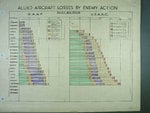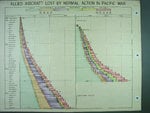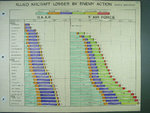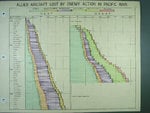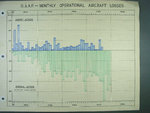Wildcat
Major
After looking at Neil's post on RAF strength I thought I'd look for similar data on the RAAF. I couldn't find any that are available to view online at the National Archives yet, but did come across these graphs that I thought were interesting.

